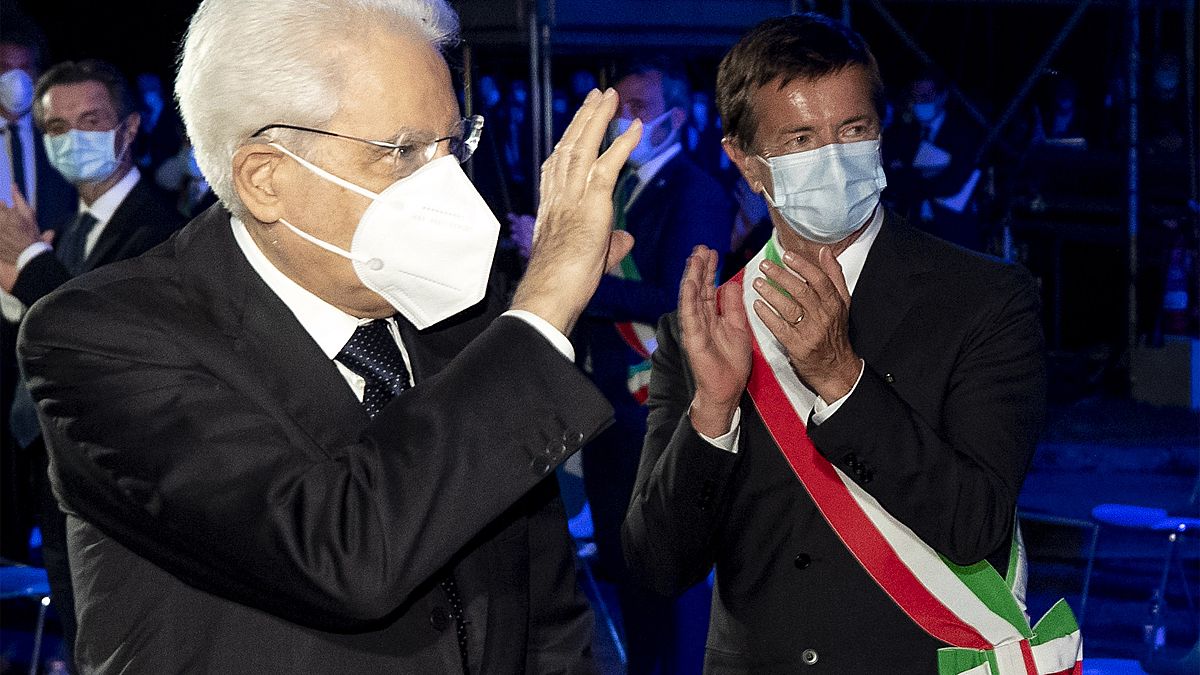The Narodni dom was a state-of-the-art cultural building. Italian fascists burnt it down in 1920 amid tensions between Italy and Yugoslavia.
Italy today handed over an ex-Slovenian cultural hub — a hundred years to the day it was burned down by fascists.
The gesture, carried out in Trieste, is aimed at healing wounds with ethnic Slovenians in the north-eastern city.
Italy annexed Trieste from the Austro-Hungarian empire at the end of World War I, when Slovenian speakers made up around 25% of the city's population.
Then, on July 13, 1920, Italian fascists burned down the city's cultural centre, known as Narodni Dom in Slovenian, in retaliation for the killing of two Italian soldiers in Split, now part of Croatia, by Yugoslavian nationalists.
A century on, Italian President Sergio Mattarella signed the building over to the Slovenian community on Monday (July 13).
He said the handover marked the "start of a new chapter in the shared future of Italians and Slovenians, in the European spirit of mutual respect, cooperation and coexistence".
"I know that feelings of division and pain are still strong," he added. "But nevertheless, I am convinced that the desire for harmony and friendship is even stronger."
His counterpart, Slovenian President Borut Pahor, described it as a "dream come true as if all the stars had aligned after a hundred years".
"But they [the stars] did not do it alone - it was us who did it," he added.
The arson represented a huge loss for Trieste's Slovenian community.
It was one of Europe's most modern buildings at the time, with a 400-seat theatre hall and a glass rooftop that could be opened in summer. It also had a gym, a bank, a music school, as well as restaurants and cafes, a hotel and private apartments.
The building was restored and later became a hotel.
In the years that followed WWII and the fall of the Fascist regime, the Slovenian community asked Italian authorities several times to have the building host activities for them again.
"At the beginning of the 20th century, Italy's liberal party, which had a majority in Trieste, did not want to open Slovenian schools in the city centre and restricted the cultural, political and demographic presence of the Slovenians, who used to be over a quarter of Trieste's population," said Marta Verginella, a historian at the University of Ljubljana
This kind of attitude, she told Euronews, remained during the Fascist regime and also throughout the history of the Italian republic.
In January 2020, president Mattarella and president Pahor finally announced the handover would take place in July, exactly 100 years after the arson.
The Narodni Dom currently hosts a branch of the University of Trieste and a library with over 43,000 books.
Following the handover, the building will be owned by an organisation constituted by two Slovenian minority associations, the Slovenian Economic and Cultural Union (SKGZ) and the Confederation of the Slovenian Organisations (SSO).
